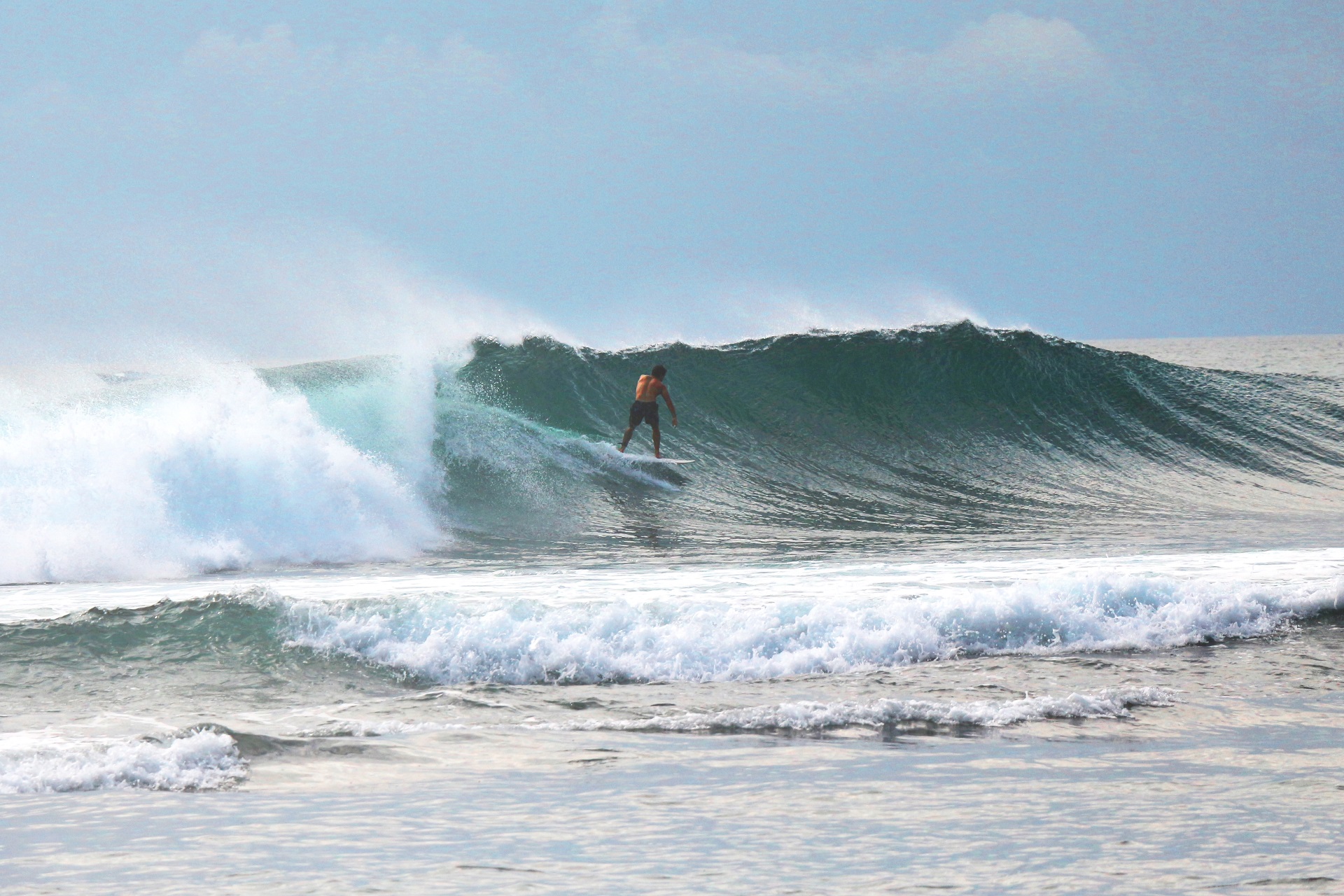Discovering the origins of surfing, one of the oldest sports in the world
The first surfers were the Polynesians. Surfing was not born as a sport, but as the result of a need for survival, adaptation and exploration. Let’s leap back to the 15th century when the Polynesians loaded their canoes with their children, their few possessions, some of the livestock and plants they cultivated to set sail for new unknown lands by sailing in the Pacific Ocean. After a journey that today seems impossible, they reached what is now Tahiti, in Hawaii. From that moment, the Polynesians began to surf in their rituals, in tournaments or just for fun.
These people have always “felt at home” in the middle of the sea. The strong connection they have even nowadays with the sea and the water can be easily perceived by listening to their songs and looking into their traditions.
Europeans arrive in the paradise of surfers
In 1777 James Cook was the first European to learn about this sport, observing a native of Tahiti while they ride on their canoes. At that time Tahitian rulers surfed on real boards up to five and a half meters long and weighing about seventy kilos. Ordinary people, on the other hand, used canoes. Hawaiian kings surfed on their beaches and practised this activity to maintain physical fitness, a requirement to hold their social position.
From decline to recovery along the American coasts
Later, mainly due to contact with other cultures and religions, the practice of surfing underwent a gradual decline. Only towards the end of the XXIX century surfing had a slight and brief recovery and in 1885 took place what fans call “the baptism of surfing” on the American coast. Some Hawaiians who were attending a military school in California built redwood boards to surf the waves at the mouth of the St. Lawrence River. In a very short amount of time, this sport became very popular in North America.
Hot dogging, the new style that made the history of surfing
At the end of 1920, Hawaii had become a popular destination for the few American tourists who could afford the trip. At the same time, when surfing started to gain popularity in the USA, a new style was invented: hot-dogging. This style of surfing allowed people to be able to follow the wall of the wave, thanks to the use of shorter boards and more easily manoeuvrable than the classic ones.
In the thirties, Waikiki, in Hawaii, became the favourite destination for surfing enthusiasts from all over the world. Among those were the famous beach boys.
The World Wars and a new arise in the ’50s
During the period between the two World Wars, surf became more and more popular in California and Australia. At the time, surfing was an elite activity for wealthy people, a distinct social group that spent much of its time on the beach surfing and organizing contests and parties. In those years surfing turned from a mere sport into a real cultural phenomenon embraced by the cinema, music and even fashion industries. In the fifties, after the Second World War, surfers invaded shore and beaches as never before. In 1956 the first international competition was held in Makaha, Hawaii, and from that moment on it became one of the most important surfing events in the world.
The ’60s and surf personalities in the world of cinema
In the ’60s, several surf movies were produced. Among these, it is impossible not to mention The Endless Summer, Blue Hawaii with the famous Elvis Presley, and Ride the Wild Surf, to name a few.
In 1960 Surfing Magazine was launched, the first printed surfing magazine, and in the same period, the first surf contest in the history of the United States took place. By the ’70s surfing was considered a lifestyle.
Surfing in the 2021 Tokyo Olympics
Today surfing is a sport practiced in over 500 countries around the world and in 2021 this beautiful sport will make its first Olympic appearance. Italy will be represented by great athletes such as Leonardo Fioravanti, Emily Gussoni and Giada Legati.

